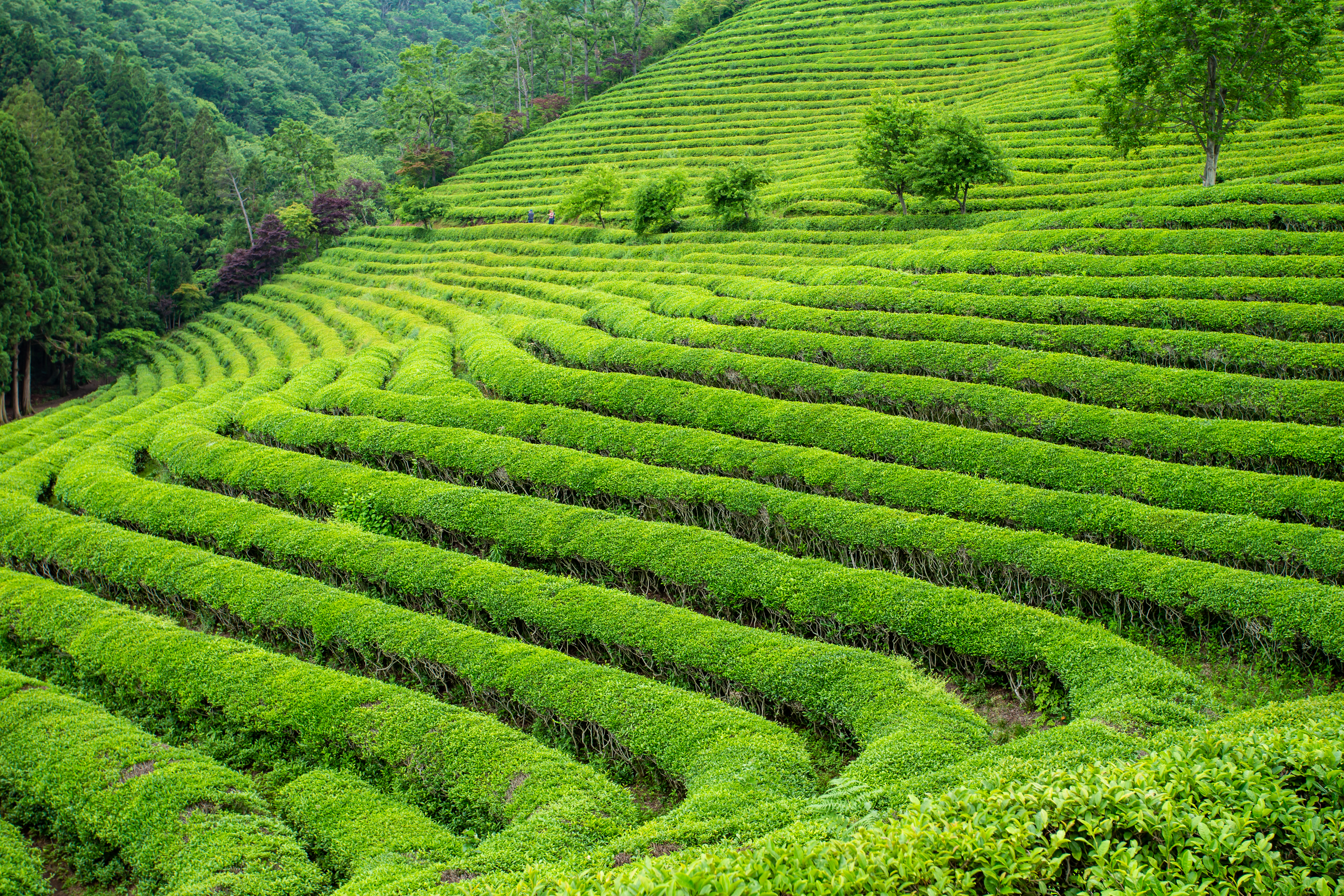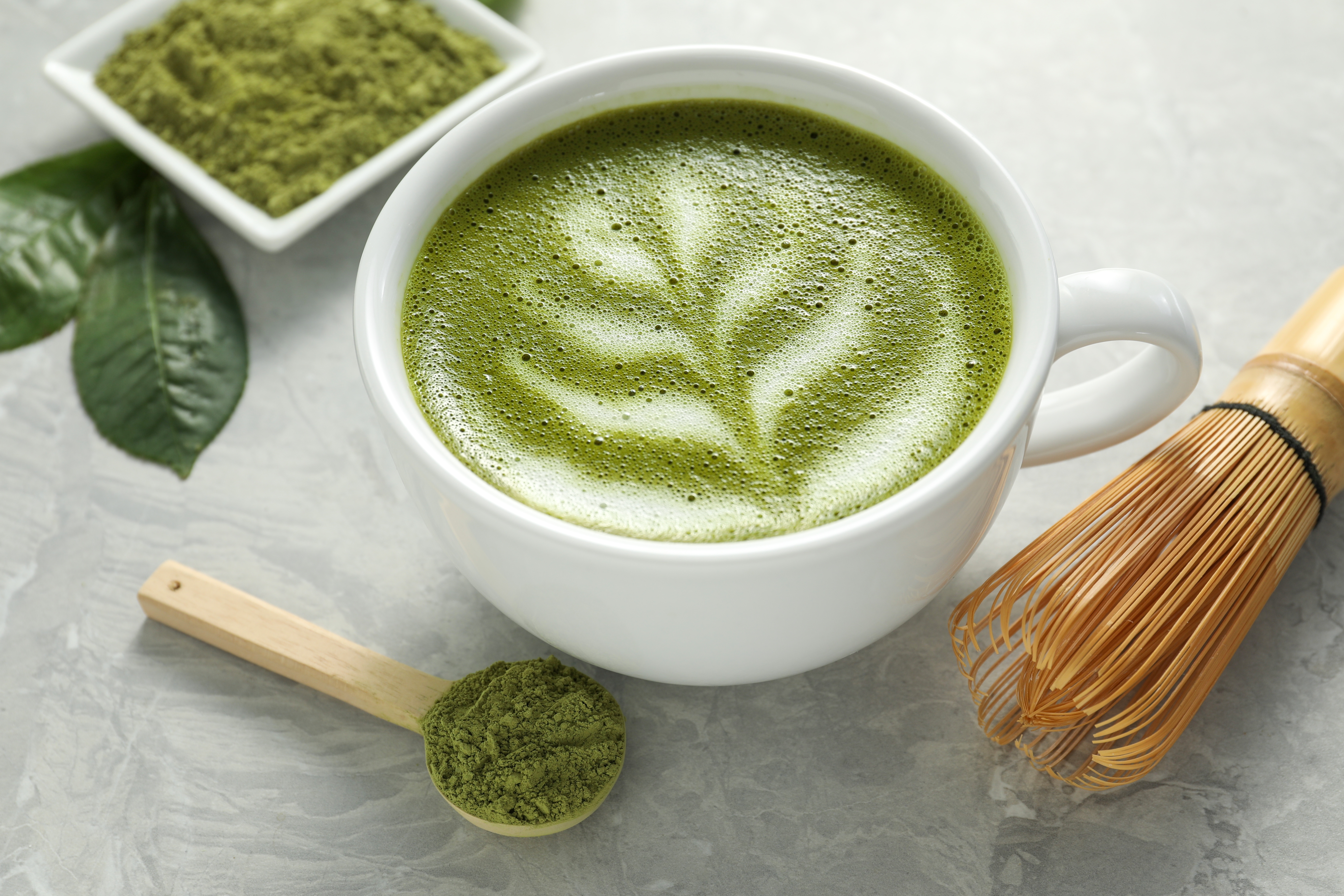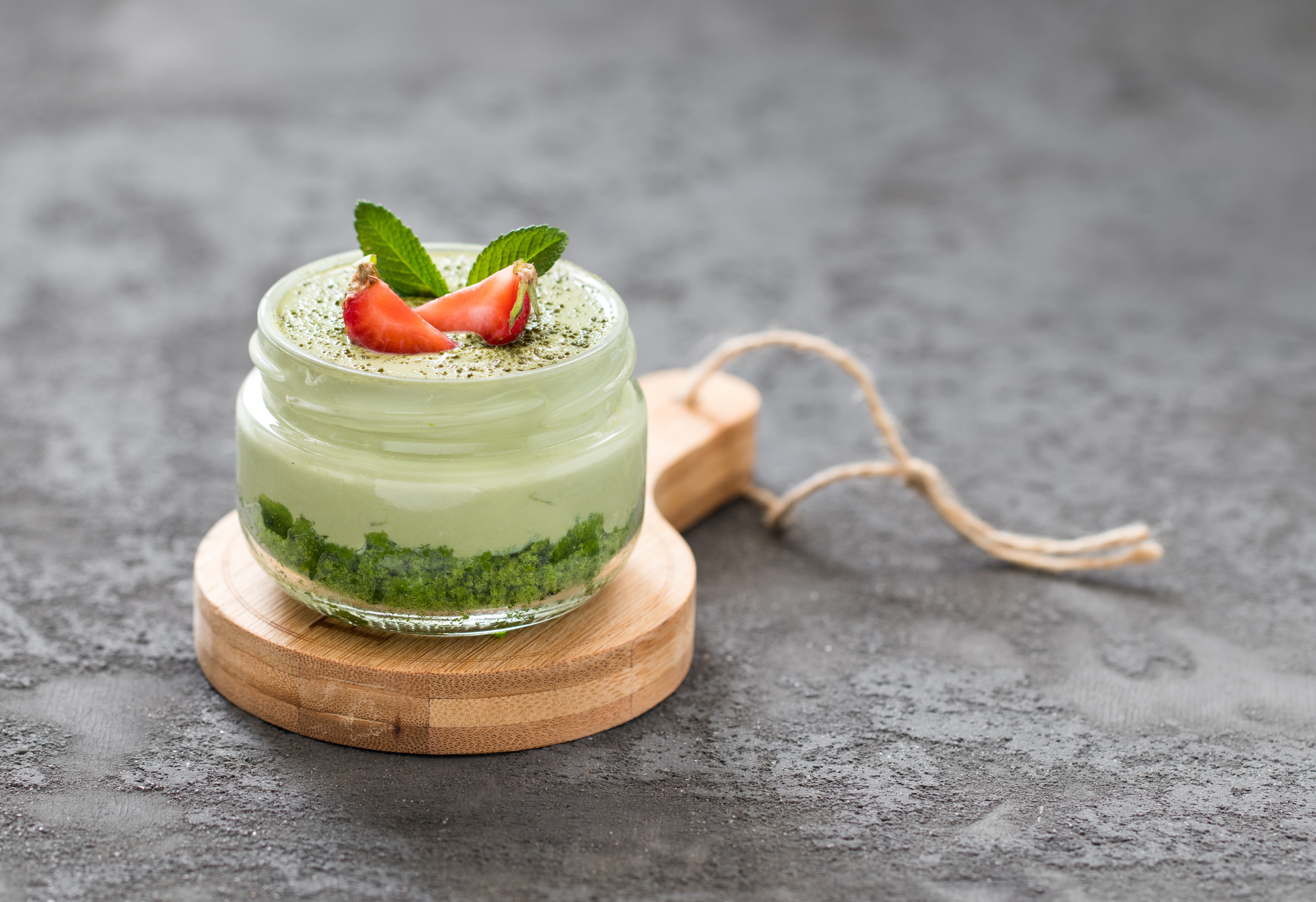Free digital copy
Get Speciality Food magazine delivered to your inbox FREE
Get your free copy
Speciality Food recently wrote about the huge surge in popularity of pistachio as a flavour trend. But it’s not the only ingredient whose sales are making other products ‘green’ with envy.
Matcha is also experiencing an unprecedented level of interest from consumers, who just cannot get enough of its clean energy, antioxidant-boosting claims, and fresh, sweet, savoury taste.
They love it in all its forms. Whisked mindfully in their favourite mug at home. Over ice with berries on-the-go from a local cafe. As an ingredient in overnight chia bowls, baking and more.
According to Grand View Research, the global market size for matcha was $4.3 billion in 2023, with an expectation it will grow by 7.9% between 2024 and 2030.
While Future Market Insights (FMI) thinks the category will grow by 10% over the next five years, being worth an estimated $6 billion globally in 2030.
Both retailers and brands are experiencing the fruits of this growth, they say. Coffee maker and cafe operator, Grind, for example, reports a 106% surge in matcha sales across its locations in 2024, and its first at-home matcha product (an RTD can) sold out six hours after launch. A new matcha collection for at-home consumption has been released recently as a direct result.
Newby Teas says its matcha sales are also increasing each year, with the team fielding more queries from customers about the sourcing of and uses for this product.
And the Bird & Blend team revealed interest in matcha is so huge they’re constantly developing new products and adding to their core range, which has grown from pure grade matcha, to quirkily flavoured varieties such as Raspberry Ripple and Birthday Cake.
Tom Down of Matcha Factory (which started selling matcha in 2007) explains that “to say it [the market] has exploded would be an understatement”. He says the UK’s appetite for matcha hasn’t plateaued yet, and that now’s a fantastic time for retailers, cafes and foodservice outlets not already selling it to get on board.

The Camellia Sinensi plant is grown predominantly in Japan for the green tea market. Leaves selected for matcha production are shaded for a few weeks (typically up to 40 days) before picking young. This halts the creation of compounds that can lead to bitterness, while increasing levels of the amino acid L-theanine, which contributes to matcha’s unique taste and soothing properties.
Once graded and plucked from the plantation, the leaves are finely milled (usually stoneground) within 24 hours to preserve the potency of their nutrients.
Yes and no. They’re from the same plant, but the method of growing is different. While matcha plants enjoy a period of shading, standard green tea is finished off under full sun. Matcha’s shading period is thought to concentrate its health benefits.
You’ll find both culinary grade and ceremonial grade matcha on the market. Culinary grade matcha tends to be coarser and made from slightly older leaves, with a stronger flavour. It’s fine for use in baking, and often finds its way into smoothies and breakfast bowls.
Ceremonial grade, on the other hand, is finer in quality and considered the creme de la creme of matcha. Made with younger leaves, it has a more delicate, sweet taste, and verdant green colour.
It’s green, grassy and a touch earthy with a sweet/savoury, sometimes nutty, finish.
Multiple claims have been made about the benefits of drinking matcha. It’s filled with antioxidants and chlorophyll, which can help cleanse the bloodstream. Several studies have shown matcha could increase metabolism and fat burning to aid weight loss. Links have been made between matcha and better gut health. Some report it eases their anxiety. And it’s considered by some a ‘clean’ source of energy, aiding users with focus throughout the day.
The average cup contains around 70mg of caffeine, compared to 95mg in coffee, and 35mg in green tea.
The levels of the amino acid L-theanine (thought to aid sleep and relaxation) in matcha mean it releases caffeine more slowly than regular green tea. And its effects tend to be more sustained. So you shouldn’t get a huge ‘jolt’ of caffeine energy, but rather a longer, slower release across a few hours.
You might have had it either way, but most experts agree matcha should be prepared using hot (not boiling) water at around 80C. Not only does this give the best flavour, but the heat releases more L-theanine.
If you want to serve a cold preparation of matcha it’s best to make it hot, then cool it, serving it over ice.
It’s quite expensive, but yes you can. Brands to look out for include Domatcha and Yu. Ensure you choose products that have been processed naturally rather than using solvents.
Nutritionist Olivia Nottin, founder of Matcha & Beyond, says sieving matcha is an essential first step. “Since matcha doesn’t contain anti-caking agents, small clumps naturally form, and sifting helps create a smooth, lump-free drink.” Depending on your taste and caffeine needs, she says to use between 1g and 4g of matcha powder, recommending at least 2g for drinks over 8oz to maintain the right balance of flavour and richness.
“Start by placing your sifted matcha in a bowl, then add hot water (around 75-80C). Then, using a bamboo whisk, whisk briskly in a zigzag motion until a smooth, creamy green froth forms on the surface. From there you can enjoy it straight with water or add your preferred milk for a latte.”
Amy Moulsdale, group coffee manager of Grind, says you should ‘bloom’ your whisk before even touching the matcha by sitting it in hot water to soften the bristles for around 60 seconds.

It’s not just its vibrant look that’s got consumers hot footing it around town, clasping cups of the green stuff. “Wellness is a huge topic of conversation,” says Amy, “people are much more health conscious.”
Olivia has seen a massive surge in sales of matcha in the past two years, she says, adding that it’s a tenfold increase over the last 12 months.
“I think a lot of this has been influenced by trends from US, where matcha is everywhere,” she explains, agreeing with Amy. “The growing interesting in healthy lifestyles, speciality coffee and premium drinks in general has also played a huge role. When sourced well, matcha offers incredible health benefits, works beautifully in functional beverages, and has an amazing flavour when used in baking. Plus, its deep green colour makes it visually striking, which has helped boost its appeal.”
Olivia says there’s also been a shift in the way people approach premium drinks. “Just like we’ve seen with speciality coffee, customers are now looking for high-quality teas, learning about their origins, processing methods and flavour profiles. They’re realising that matcha isn’t just a trendy green powder – it’s an artisanal product with depth and craftsmanship behind it.”
The interest in wellness and mindfulness combine seamlessly with the making of matcha too, Olivia explains, saying that those who drink it appreciate the slow, daily ritual and moment of calm involved with crafting a cup. “The process of whisking matcha has a meditative quality – there’s something grounding about focusing on the rhythm of the whisk, the transformation of the tea, and the simple act of being present.”
In many ways, she continues, matcha is becoming the next ‘third wave’ drink. It “isn’t just a passing trend – it’s here to stay”.
Becky McCaul, marketing manager at Green Origins, points to Mintel’s Trends in Coffee Report 2024 when considering matcha’s popularity. It says consumers, particularly Gen Z and Millennials are increasingly adopting cafe culture. “One in three is looking for something different in their food and drink. In addition, cold versions of traditionally hot drinks are gaining in popularity, with cafe menu boards offering cold or frappe style drinks all-year-round.” And matcha certainly fits the bill.
Despite their tendency to choose low-cost dining options such as cafes and tearooms over restaurants, consumers are looking to save more money by recreating the cafe experience at home for a fraction of the price, Becky adds, saying they’re heavily influenced by social media. “Even more affluent shoppers are trading down from on-trade to a good quality cup at home, according to NQI, which could offer an opportunity for premiumisation in grocery.”

Olivia says it must be sourced from Japan, with the very best ceremonial-grade matcha chosen from the first harvest of the season, ensuring the freshest flavour. “This is important, because matcha is a delicate, natural product with no preservatives.”
Tom explains more about the grades of matcha, saying retailers should be looking for the higher grades, which are most sought-after, because of their bright colour and sweet, umami flavour.
The location where the tea is grown will also affect its quality. “Uji, Japan, is world-renowned for its matcha because the climate there creates the perfect growing conditions, with rich soil and plentiful rainfall,” Tom reveals. “The steep mountainsides create a blanket of mist that protects the young tea leaves from frost.”
For Becky, matcha must be organic. “Consumers are increasingly buying into the concept of clean labels so that they are not consuming any unexpected toxins or chemicals,” she says, adding that clear traceability back to the farm is very important too. “We believe that trust in the product is crucial.”
Amy says detoxing and choosing an alternative caffeine hit to coffee have been drivers up until recently, with more people getting excited by the visual appeal of matcha – especially the two-tone drinks claiming a space on the high street.
Olivia agrees it’s not just purity consumers are craving today, it’s innovation, with multi-layered ‘rainbow’ matchas all over Instagram and TikTok. While these look good, she says it’s important to remember adding syrup means adding sugar, making the matcha less healthy.
Cafe owners thinking of tapping into this trend need to think about what their customers want from their matcha – a healthier, low-sugar alternative, or something fun to share on socials.
In addition, RTD matcha products are in high demand right now, Olivia adds.
Beyond these, the matcha movement has gone a step further in the last few months, she continues, with more shoppers pondering its quality, and asking questions about provenance and production.
“Many now understand that good matcha isn’t supposed to be bitter – it can actually be smooth, naturally sweet, and enjoyable without sugar or additives. I offer three different matcha grades at various price points, and I’ve noticed a shift in customer preferences. In the past, many would opt for a lower-grade matcha to blend with milk, but now more are choosing ceremonial or high-ceremonial grades to enjoy as a pure tea with water, not just in lattes.”
“Matcha appeals to all different kinds of people,” says Tom, adding that it’s especially attractive for the huge number of consumers who are being more adventurous with their tea and coffee buying decisions.
Versatility is its strength too. “Like coffee, you can make a tonne of different styles of beverage using matcha as the base. The bright green colour makes matcha-based drinks photogenic and social media-friendly, so there’s the added signal-boost of people who like to buy cool-looking drinks and post about them.”
The health claims, naturally, attract those thinking more carefully about their diets. They’re adding it to shakes and smoothies for its nutritional value, Tom continues. “And the history and tradition of the Japanese tea ceremony makes it captivating from a cultural standpoint. So not everyone’s drinking matcha the same way, or for the same reasons, but a growing number of people are finding that it adds something to their lives.”
While it tends to be Gen Z and Millennials driving cafe culture, Becky says the older consumer is also demanding more from their drinks and latching onto matcha. “At each stage of life, different nutritional needs are being recognised, and increasingly they are looking to boost their diets with everyday drinks and snacks.”
The Green Origins Latte range, she adds, was developed with this in mind, as each one contains a superfood specifically targets a need, from focus, to immunity support and sleep.
Amy says retailers would be “silly” not to jump on such a fast-moving trend, while Becky adds the excitement around matcha isn’t showing any signs of slowing down in terms of growth. “So any outlet that sells drinks (whether retail or hospitality) would be wise to expand their range of matcha products to cater for customer demand.” Consumers, she continues, are “seeking excitement, but also increasingly functional benefits in their drink choices, and matcha provides both”.
Having matcha as an option for those shoppers and cafe customers putting health first is a must for today’s businesses, Olivia says. “For cafes and foodservice, matcha is a natural fit alongside speciality coffee, offering a premium plant-based option that works hot and iced. Plus, preparing matcha doesn’t take more time than pulling an espresso shot, making it easy to incorporate even in a busy coffee shop environment.”
She also thinks matcha deserves attention in retail as an ingredient as interest in using it at home grows. Demand, “makes well-sourced matcha a valuable addition to shelves, appealing to both premium and affordable options. Matcha has moved beyond a trend, and is now a staple.”
Tom agrees it’s a must-stock, and thinks retailers, cafes and foodservice outlets might be surprised at how many of their consumers are already matcha fans, or curious about the drink.
For those not already selling it, he says he absolutely recommends folding it into your existing offering.
“It’s a very low-risk experiment. You don’t need to invest in any expensive equipment, the preparation technique is easy to learn, and you can buy matcha powder in modest quantities. We’re always sending out samples and answering questions for first-time matcha sellers, so there’s plenty of support available if you’re not sure where to begin. Our matcha customers keep coming back, and so will yours.”